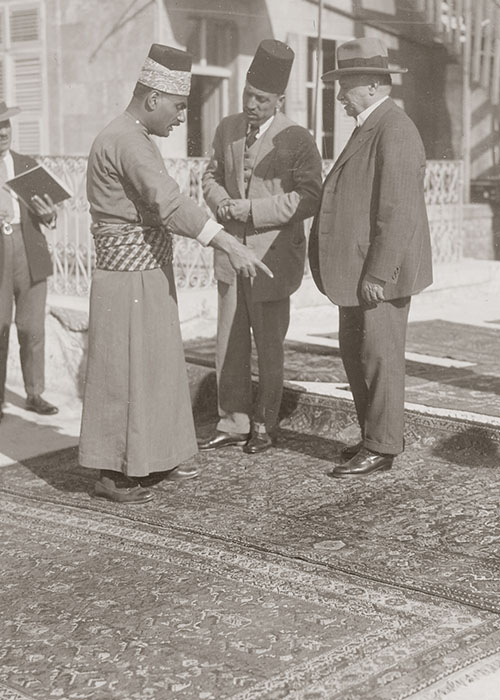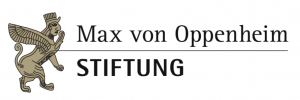
Oppenheim as Collector
Max von Oppenheim’s passion for collecting was awakened in his parents’ home. His travels in the Middle East initially motivated him to build a collection of contemporary arts and crafts, focused on objects of everyday life. The diversification of his research ambitions went hand in hand with the expansion of his collecting interests. This not only reflects his scientific curiosity, but also underscores his goal of documenting, through fascinating and appealing objects, as many different geographical and cultural regions of the Middle East as possible.
Photo: Carpet shopping at Hotel Khoudiviet el Koubra, Aleppo 1929




